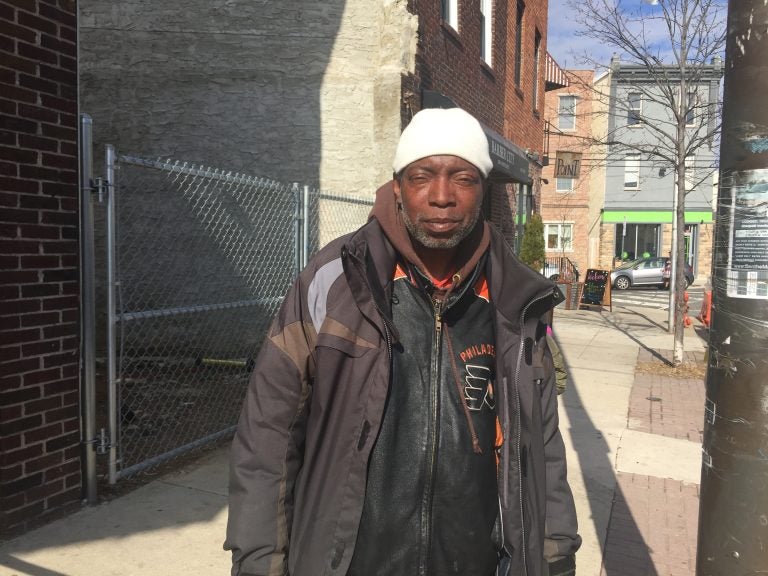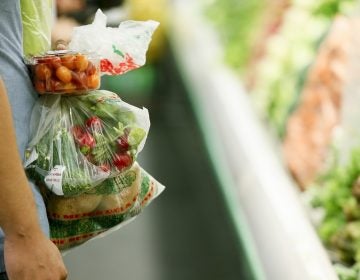Trump administration proposes limiting food choices for SNAP recipients
The administration has compared the idea, dubbed 'America’s Harvest Box,' to the fresh food service Blue Apron — but critics say the proposed food is far from fresh.

Reginald Moore, 60, of Philadelphia's Point Breeze neighborhood, is a SNAP beneficiary and a critic of Trump's plan to overhaul the program. (Annette John-Hall/WHYY)
The Trump administration’s recent budget-cutting proposal would not bode well for low-income families enrolled in the Supplemental Nutrition Assistance Program, or SNAP.
The president has proposed overhauling SNAP, the program formerly known as food stamps, by implementing a boxed food-delivery system.
The administration has compared the idea, dubbed “America’s Harvest Box,” to the fresh food service Blue Apron — but critics say the proposed food is far from fresh.
On the delivery menu: shelf-stable milk, juice, grains, cereals, pasta, peanut butter, beans, canned meat, fruit, and vegetables.
“The logistics of delivery alone make it pretty crazy to try to tackle,” said Kathy Fisher, policy director at the Coalition Against Hunger, a Philadelphia nonprofit. “It’s laughable.”
A third of all Philadelphia residents —or 480,000 people — receive SNAP benefits, meaning that the plan, if implemented, would have widespread ramifications in the city.
“It’s gonna be a mess,” said Reginald Moore, 60, a SNAP recipient who lives in Point Breeze in South Philly. “It’s ludicrous to me.”
Moore said he doesn’t see how the program would work, adding that low-income residents are already strapped enough. Moore’s friend Chuck Bradley said many don’t have a permanent address to receive a delivery.
“Sometimes I have to use somebody else’s address to get my mail,” said Bradley, who’s also enrolled in SNAP.
Both Moore and Bradley say eating processed foods such the ones proposed would be disastrous for diabetics like Bradley and those with special dietary needs.
“I like to eat what I like to eat like everybody else,” Moore said. “What they’re gonna deliver to you might not benefit you.”
And the Trump plan stigmatizes families who already grapple with food insecurity, Fisher said.
“The beauty of [SNAP] is that people have a debit card where they can load their benefits and they can go shopping for what they want,” she said. “It works the way it is.”
In all, the proposal calls for $215 billion of cuts to SNAP over the next 10 years, a reduction of 30 percent. Congress will have the final say, and federal lawmakers on both sides of the aisle have been generally supportive of the program — especially those from rural and urban areas.
The Trump plan would also affect SNAP eligibility requirements, Fisher said. For example Pennsylvania allows families to deduct child care costs from their net income to be eligible for SNAP. But Trump proposes getting rid of that option, meaning families will no longer get the food benefit to help them stretch their budget.
WHYY is your source for fact-based, in-depth journalism and information. As a nonprofit organization, we rely on financial support from readers like you. Please give today.




